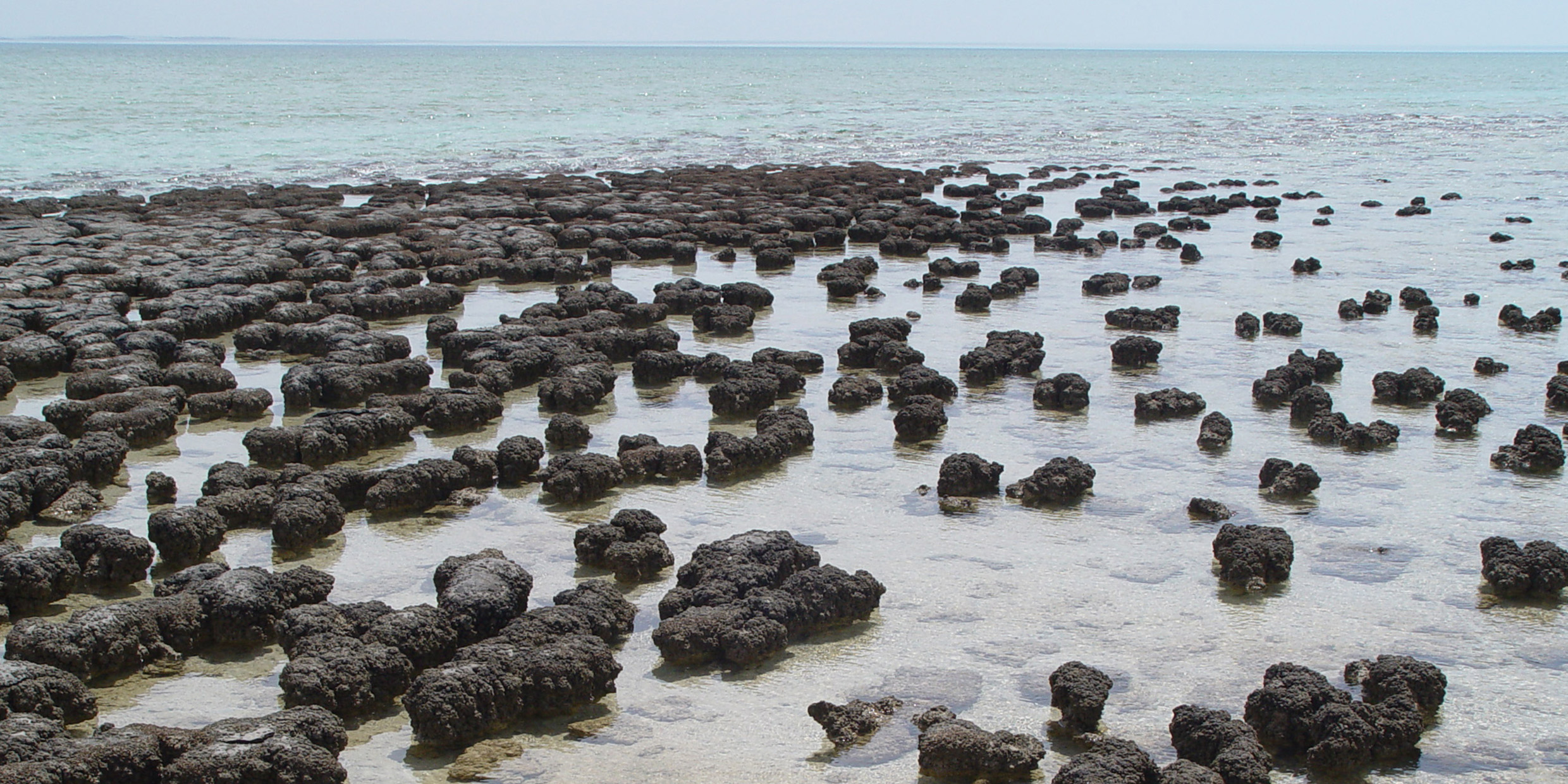Originally published 19 May 1986
Some 19th century geologists assigned the origin of life to the Cambrian Period of geologic history. Rocks younger than the Cambrian contain fossil evidence for life that is striking and abundant. Older formations seemed not to contain fossils of living organisms.
But the early geologists were wrong. When the Cambrian Period began about 600 million years ago, life had already existed on Earth for 3 billion years. Before the Cambrian, life on Earth consisted solely of single-celled, soft-bodied microorganisms that individually left an almost invisible impression in the rocks. Only with the development of larger animals with shells and bony structures does the fossil record for life become readily apparent.
But the microscopic creatures of the Precambrian did leave one conspicuous relic in the rocks, and that is the structures called stromatolites.
Stromatolites are built by sunlight-seeking microbes that live in shallow-water environments. The microbes live in mats that are as small as a thumbnail or as large as a dinner plate. These sticky mats trap fine sediments suspended in the water (chiefly particles of calcite), which are cemented into place. The accumulating sediments screen sunlight. The microbes push through to the sunny top, where they begin to trap another layer of sediments. In this way the microbes build up stony columns or domes as they scramble for the sun.
Fossil stromatolites have been found in rocks as old as 3.5 billion years. They are among the earliest evidences for life on Earth.
Some still at work
The golden age of stromatolites began about 2.5 billion years ago, and they remained abundant until the rapid diversification of animals that occurred at the beginning of the Cambrian Period. Since the Cambrian, stromatolites have been much less common, but in certain special environments modern microbes still build towers and domes.
Some fossil stromatolites in ancient rocks are inclined, like the Tower of Pisa, to the strata in which they are found. Possibly the inclination was caused by physical factors, such as the direction of sediment supply (the shoreline) or the direction of the prevailing wind. Another possibility is that ancient stromatolites grew in the direction of the sunlight, like house plants in a window. This tendency to grow toward light is called heliotropism.
In recent [1986] issues of Science and EOS (Transactions of the American Geophysical Union), Stanley Awramik and James Vanyo of the University of California/Santa Barbara report finding modern heliotropic stromatolites at Shark Bay, Western Australia, and in thermal pools at Yellowstone National Park. Their discovery that living stromatolites sometimes incline toward the sun, supports the idea of heliotropism in fossil stromatolites.
If ancient stromatolites leaned toward the sun, then their fossils can be remarkably rich clues to the past.
Vanyo and Awramik have found fossil stromatolites in the Bitter Springs Formation of Central Australia that strongly suggest heliotropism. The leaning fossil columns have a wavy structure, which the investigators interpret as a yearly back-and-forth sway as the microbes followed the seasonal motion of the sun. There are 435 fine layers in the columns for each annual wave.
Vanyo and Awramik assume that the layers record daily growth, which suggests that a solar year then consisted of 435 days. This result was not surprising: There are theoretical reasons for supposing that the Earth’s spin-rate has slowed down since the time of the planet’s formation.
Data on Earth’s history
Still more information can be gleaned from the ancient stromatolites. The amplitude of the waviness should yield information about the degree to which the Earth’s axis was tilted to the sun. If variations caused by the tides can be found in the layering, they will be clues to the number of days in a lunar month.
Finally, heliotropic stromatolites can tell us something about the drift of continents during the Earth’s early history. The direction of tilt of the columns is a kind of fossil compass that indicates north or south. The degree of tilt yields information about the latitude of the continent at the time the structures formed.
For all of this information we must be grateful to the microbial engineers that built these enduring structures.
The importance of the fossil stromatolites lies in their very great antiquity. Fortunately, sufficient numbers of the tower-building microbes continue to go about their business — at Shark Bay and Yellowstone — to instruct us in their methods.



